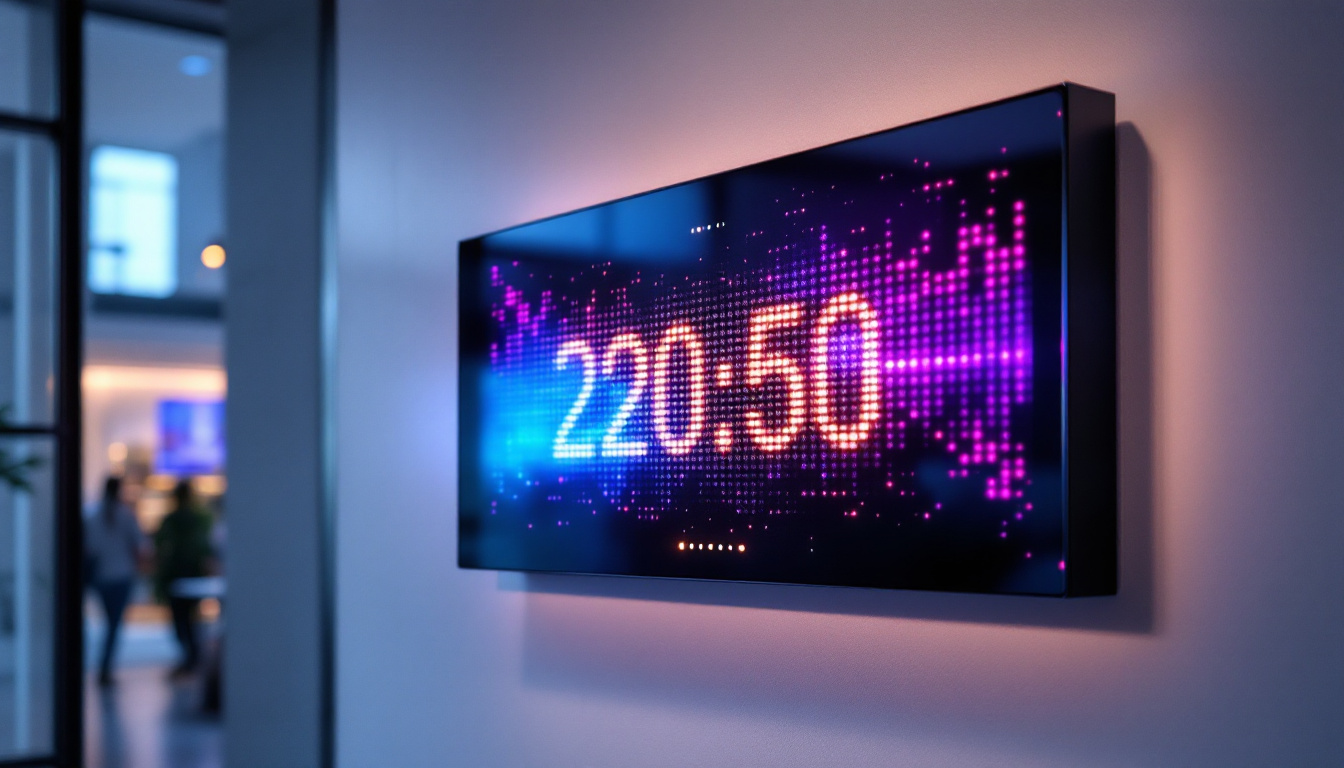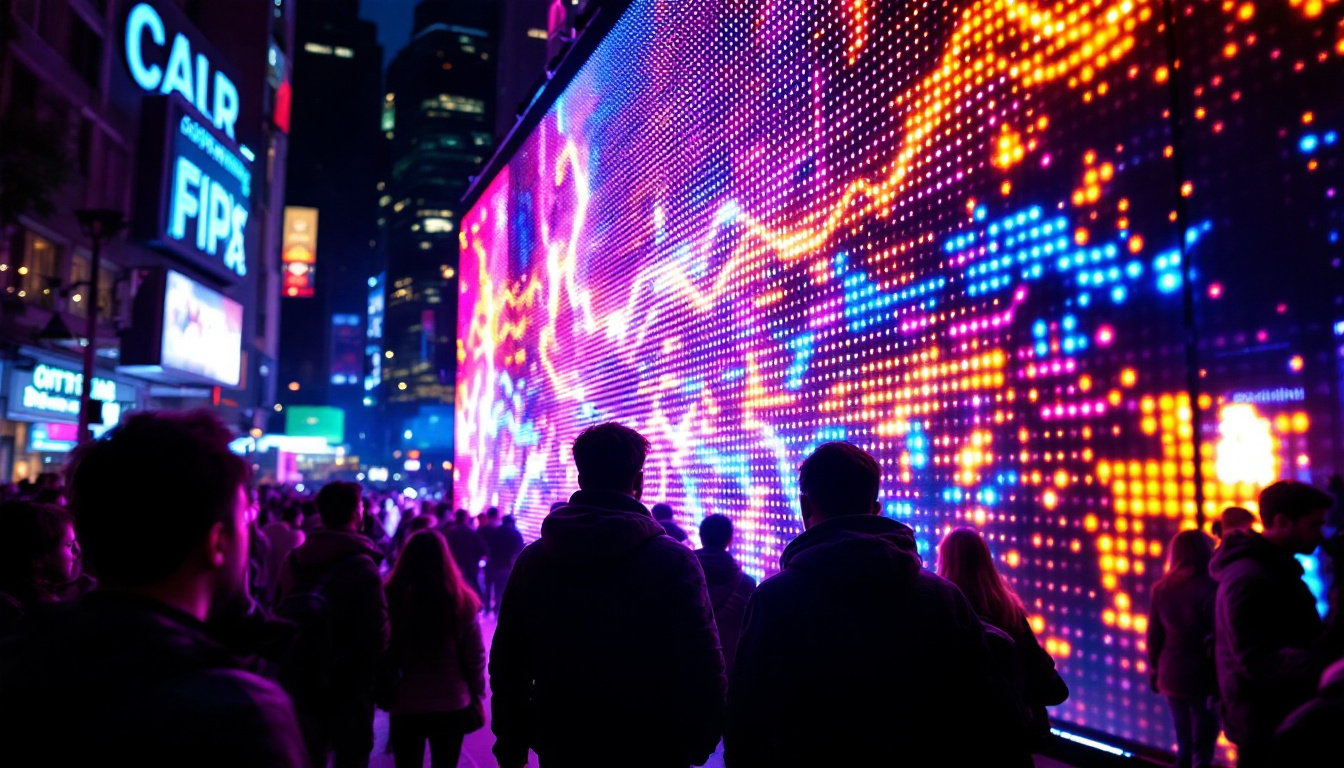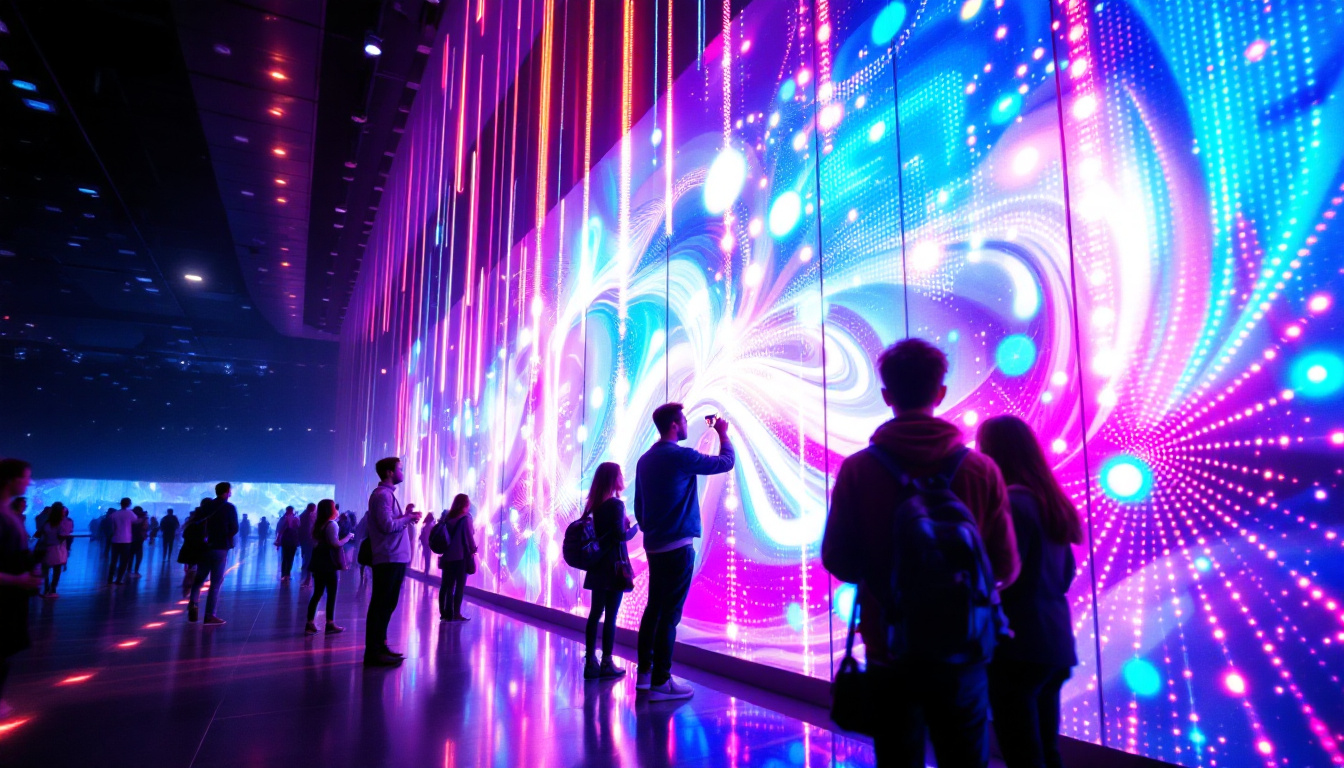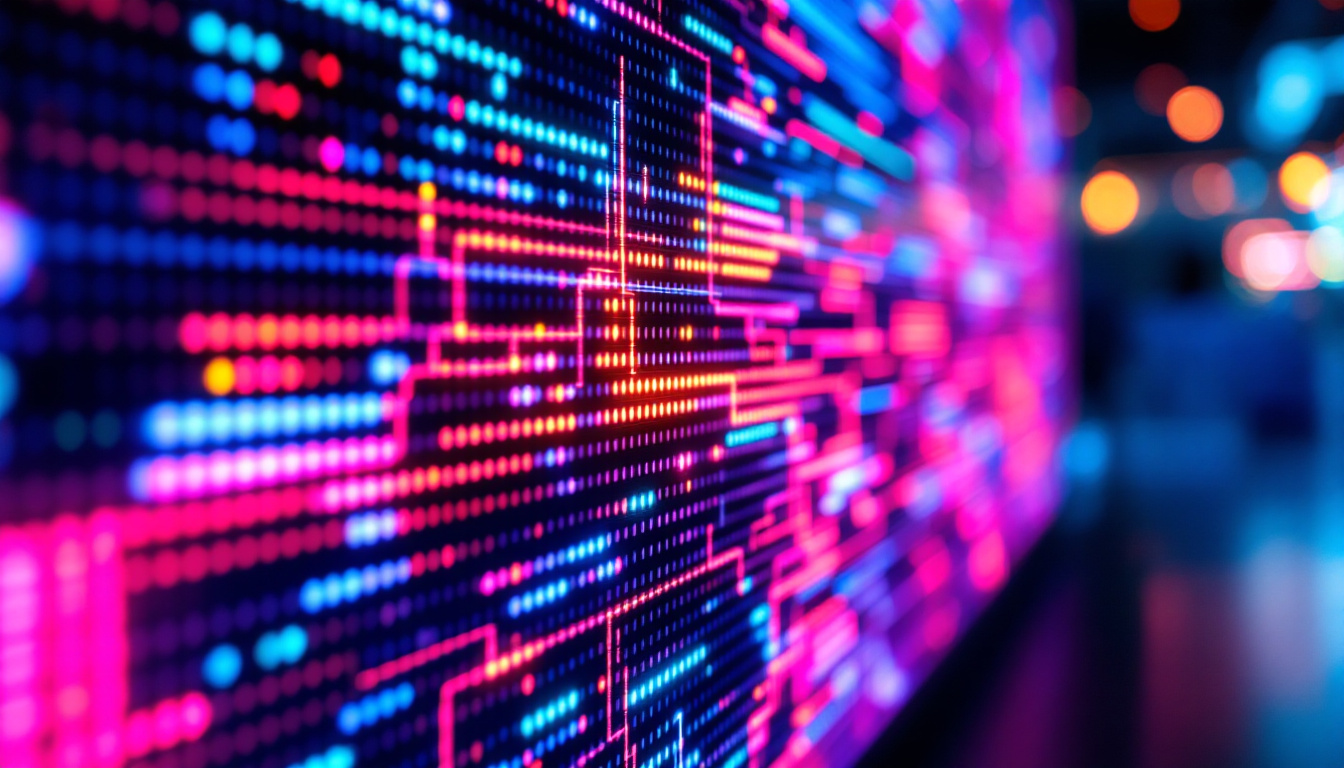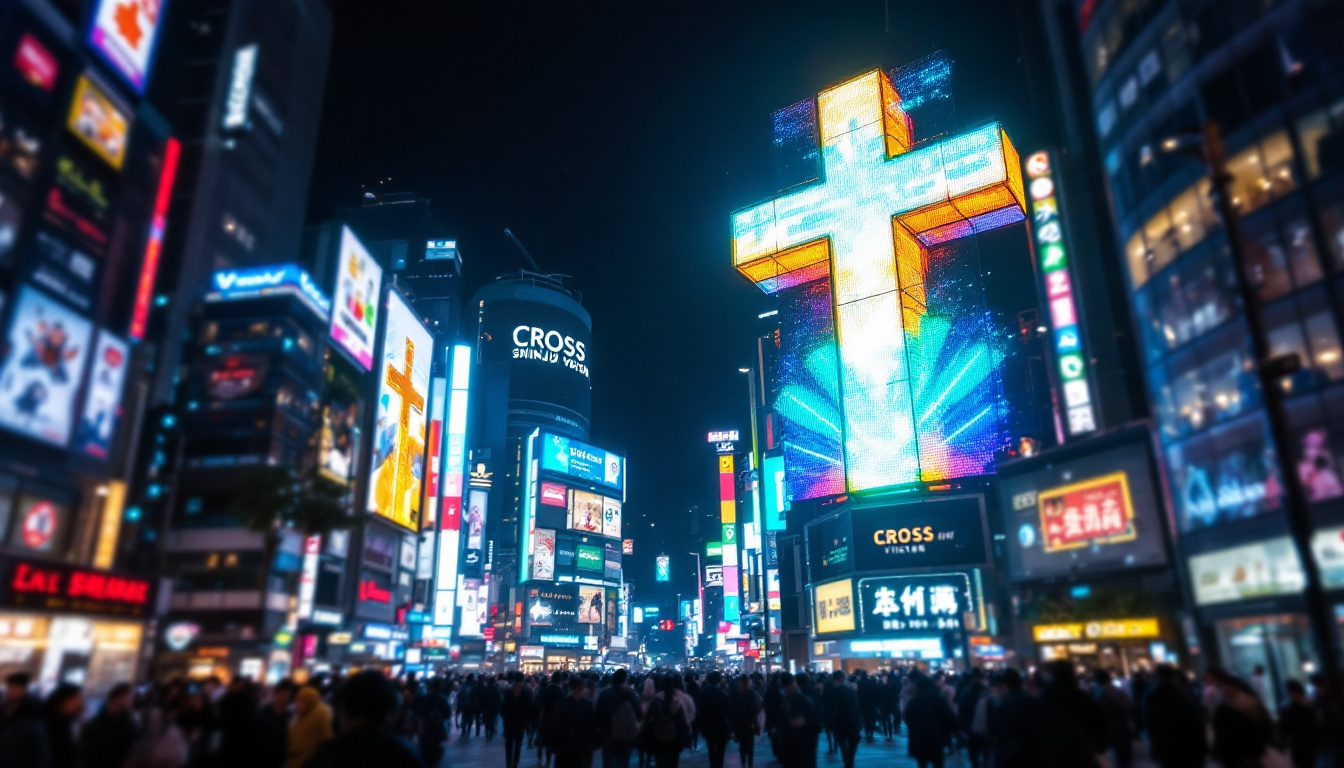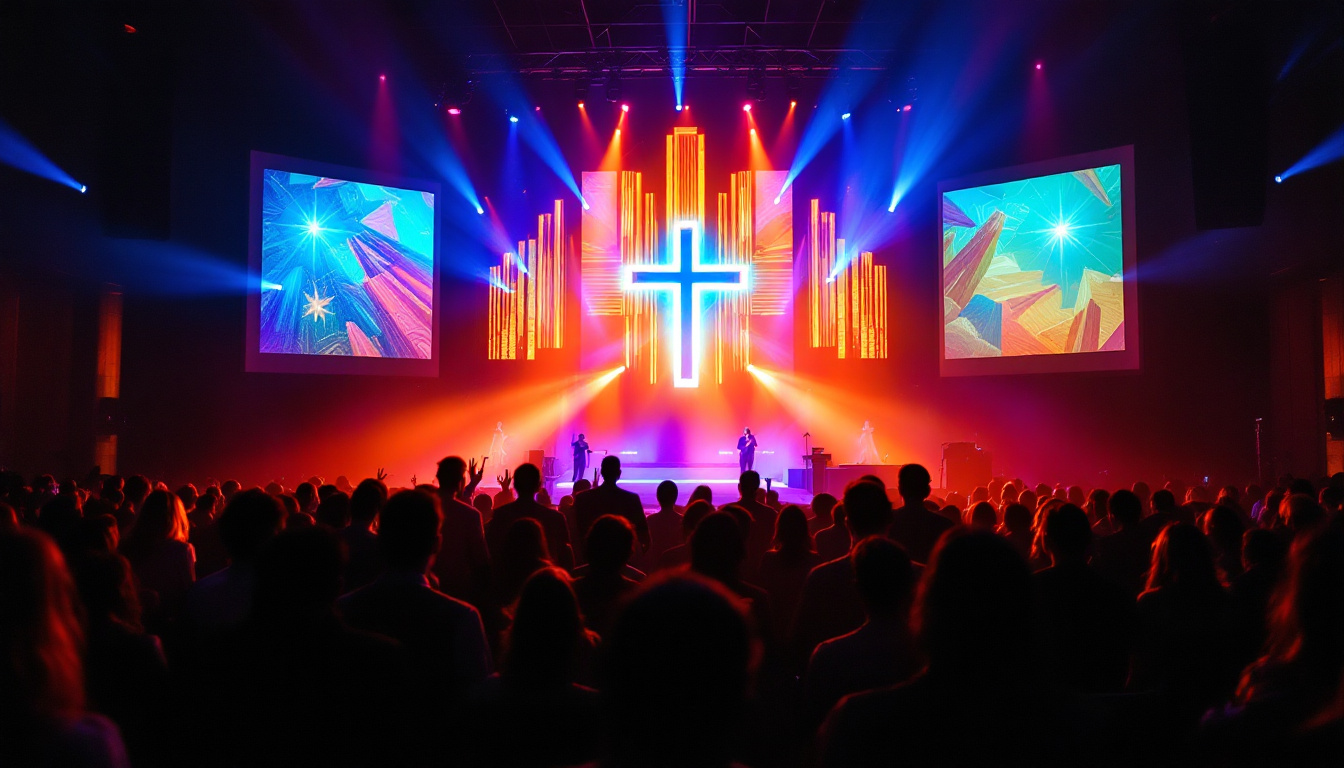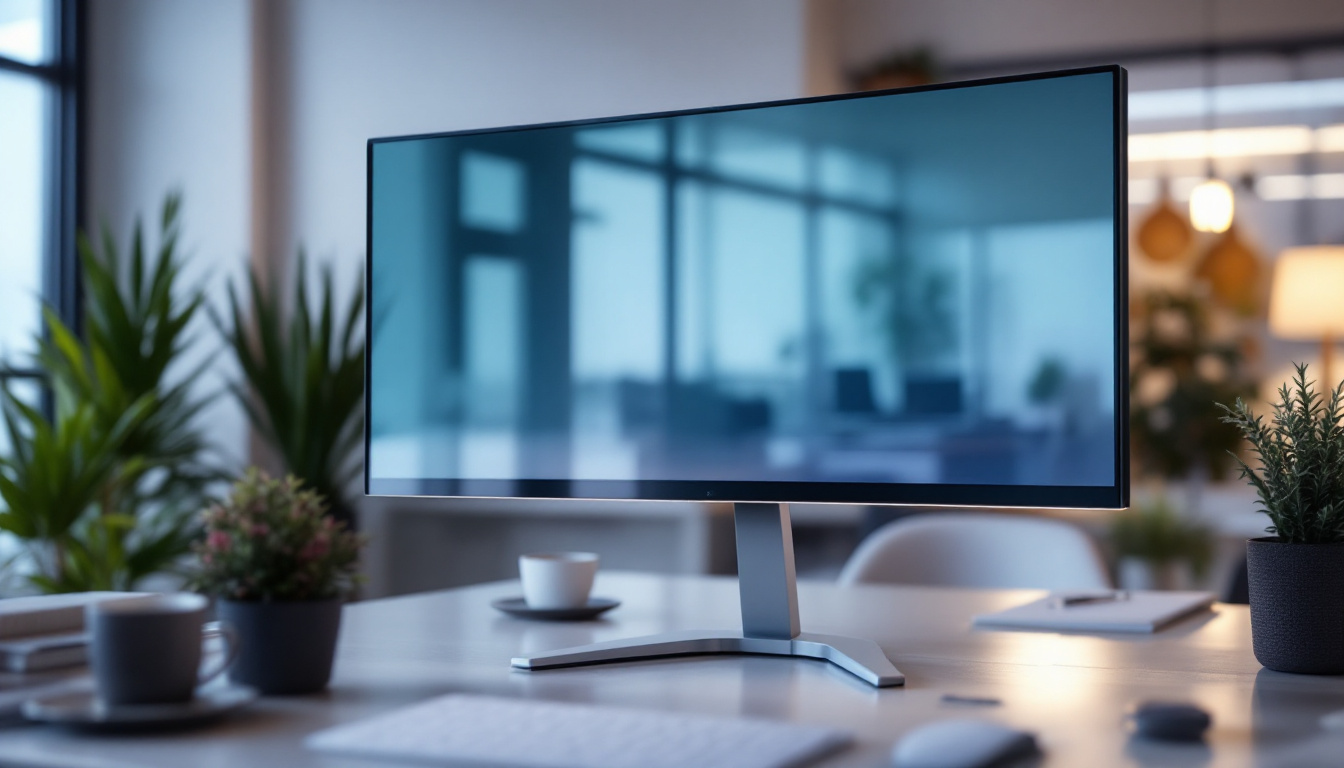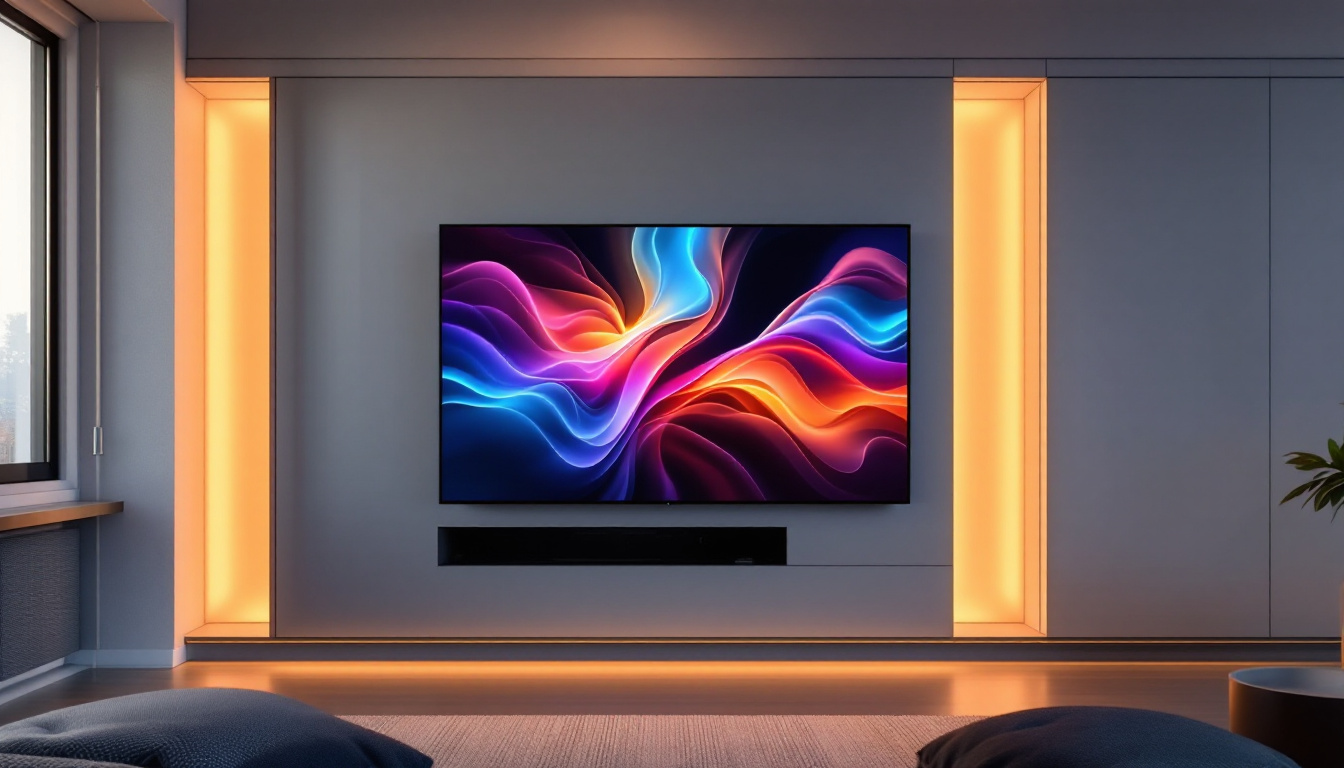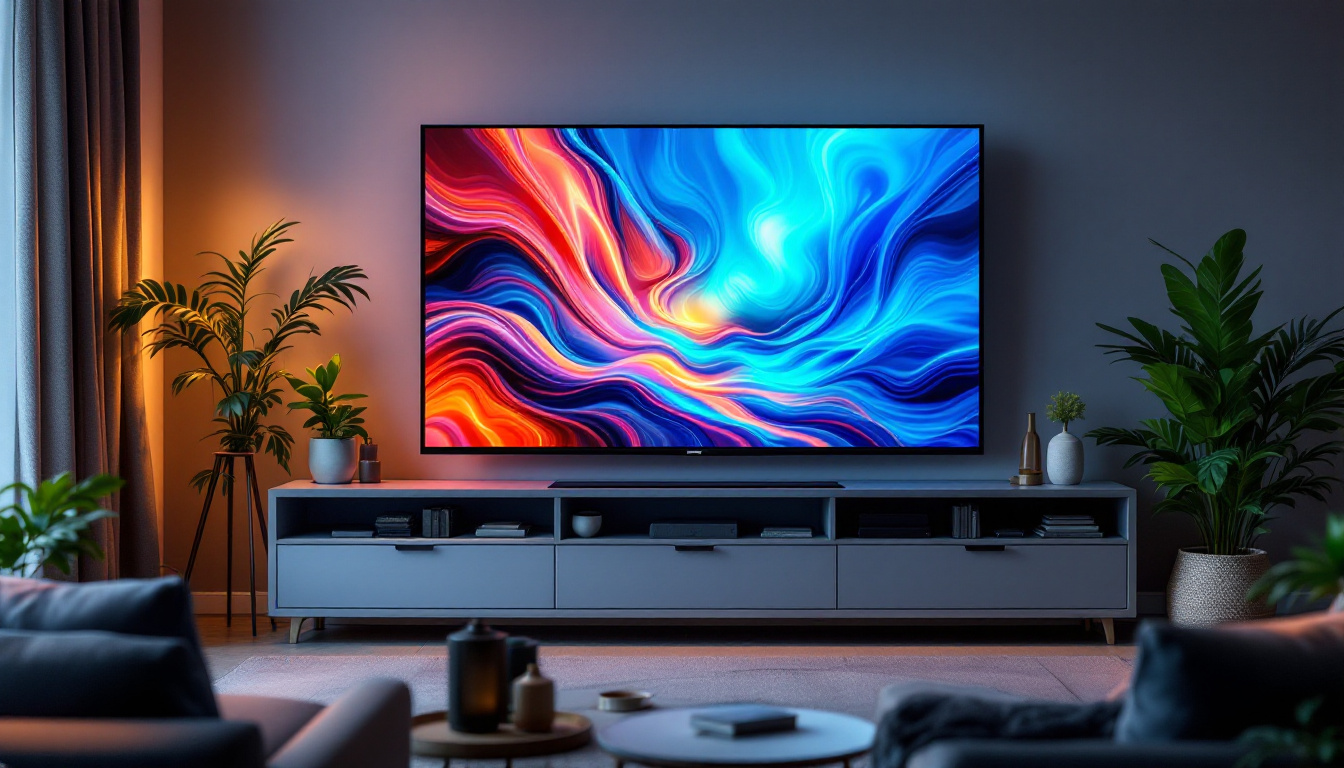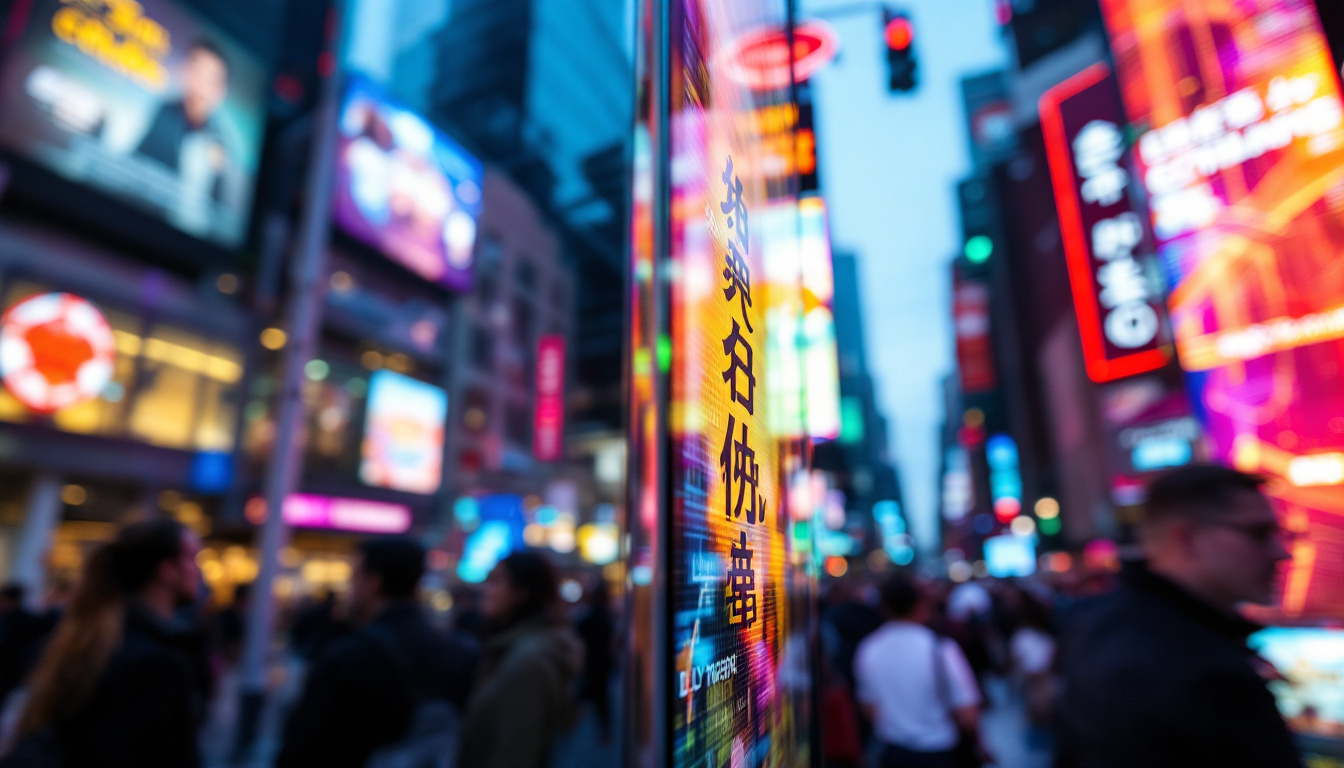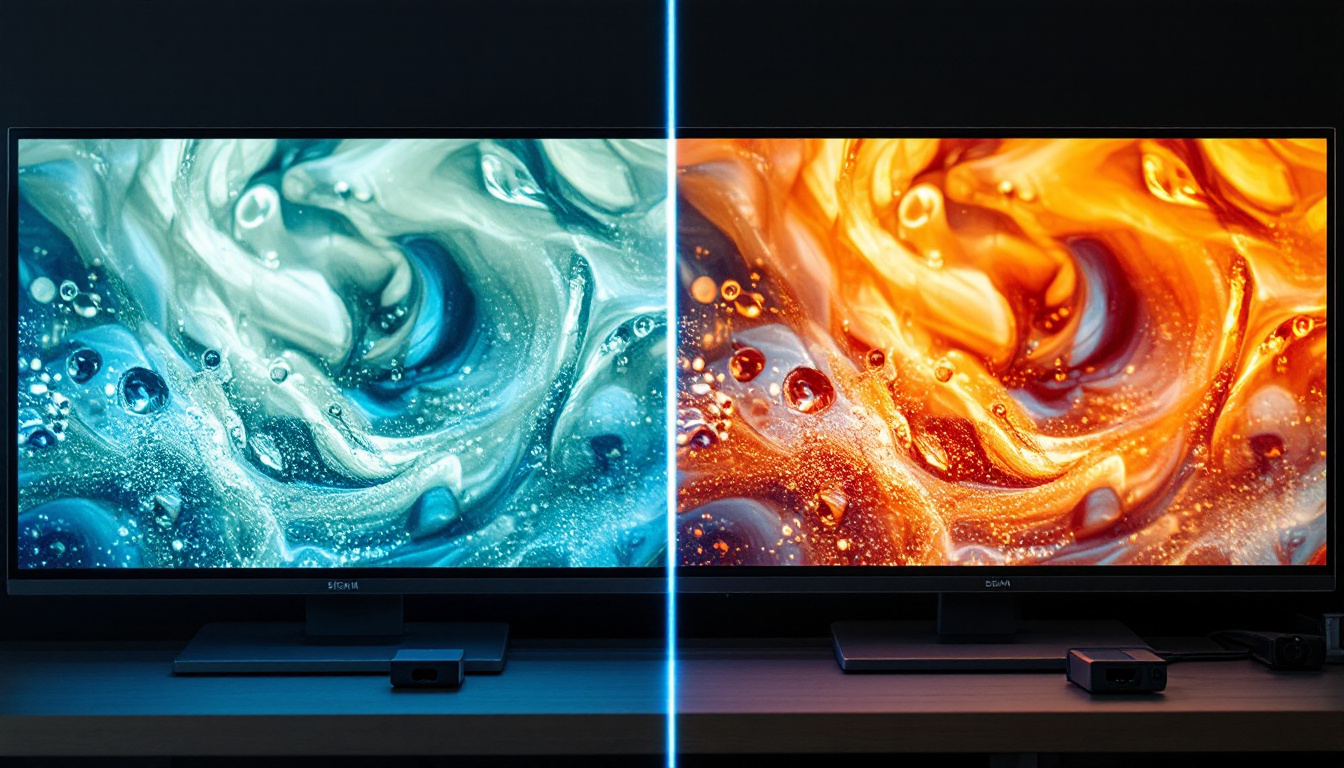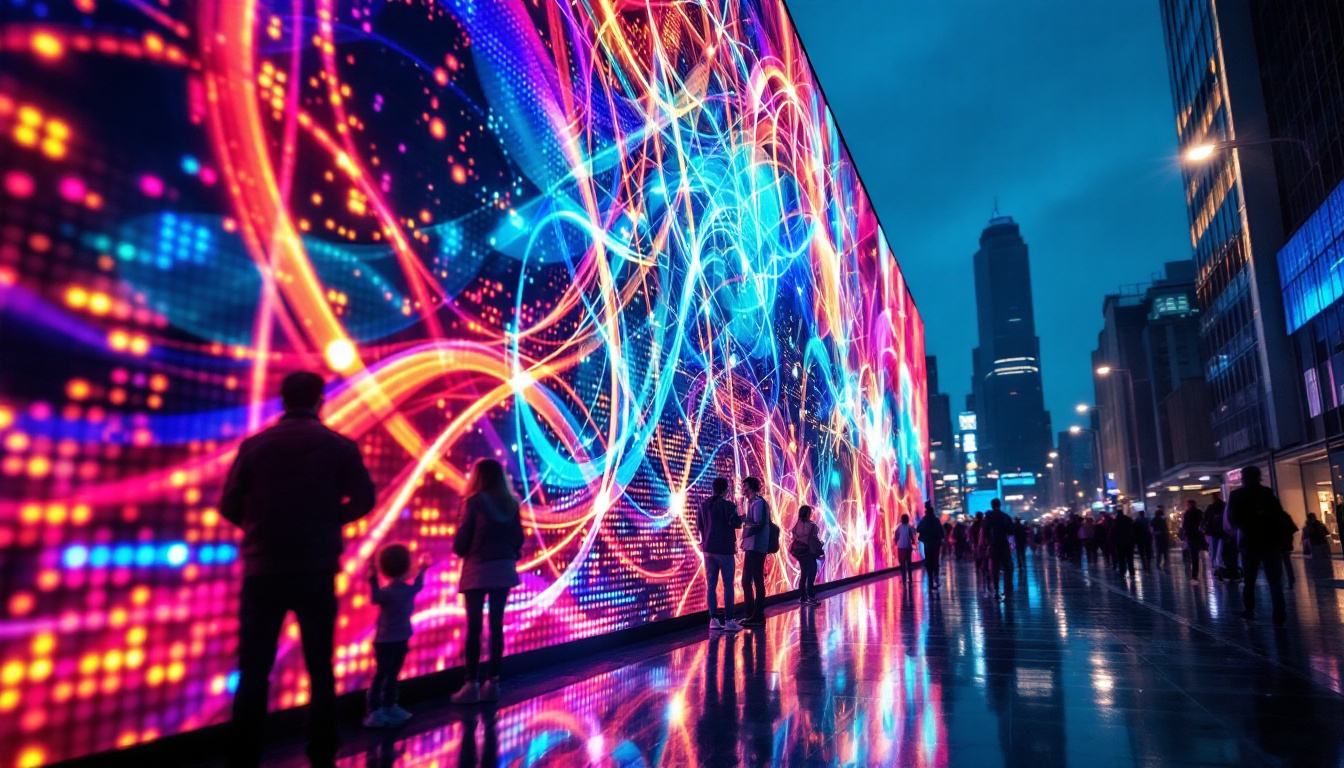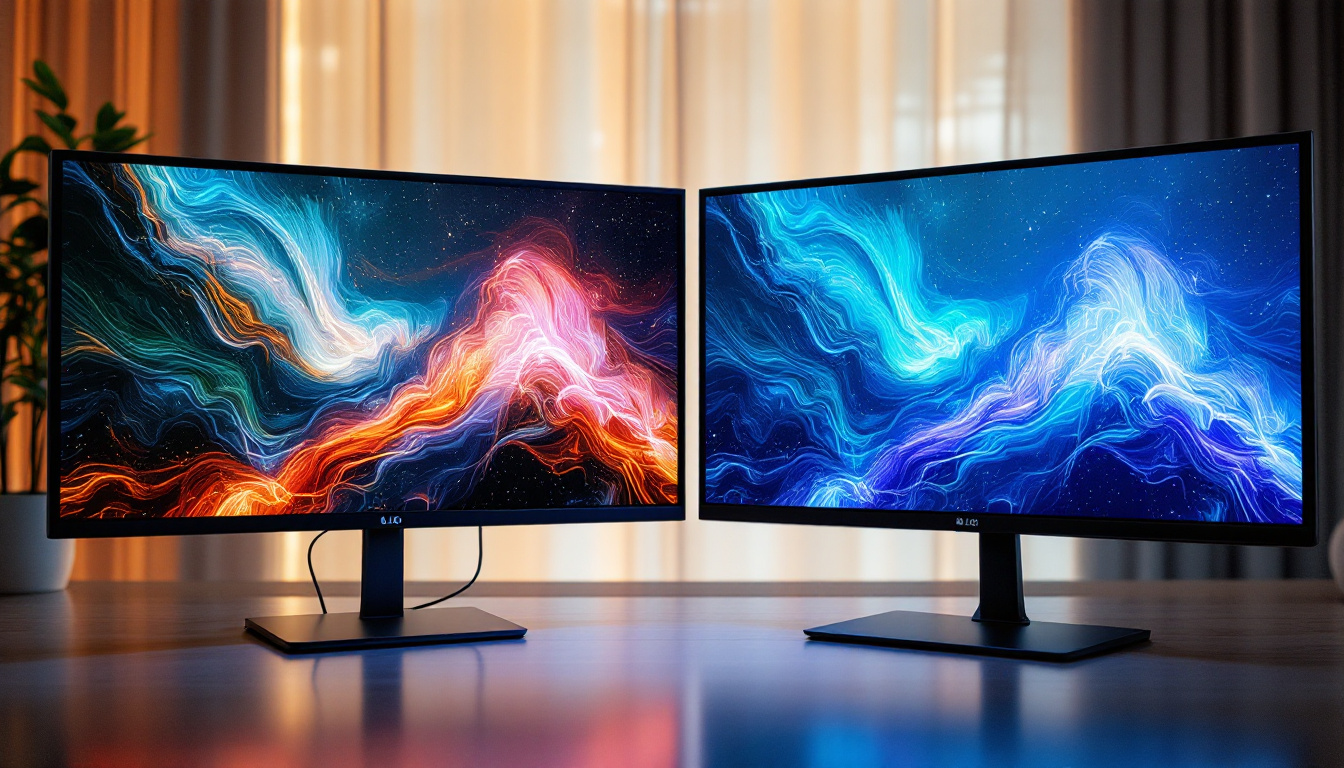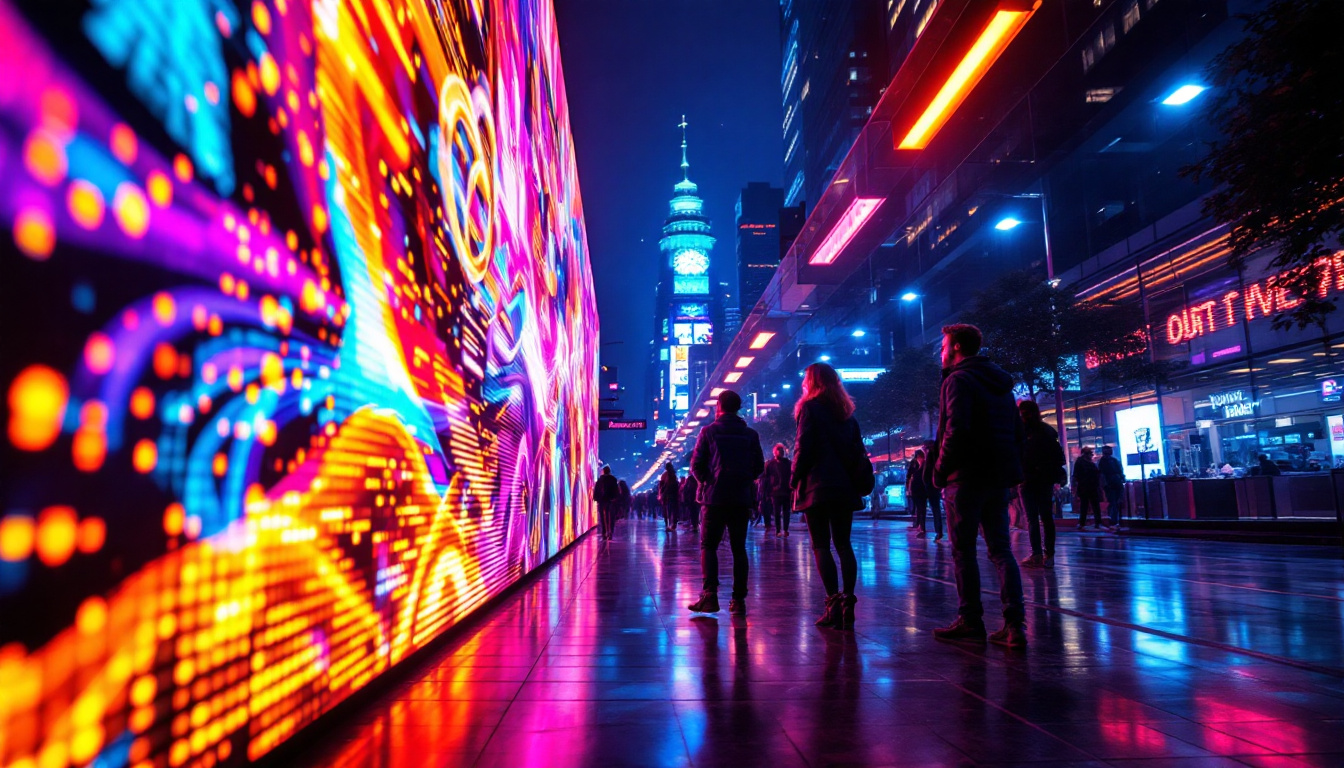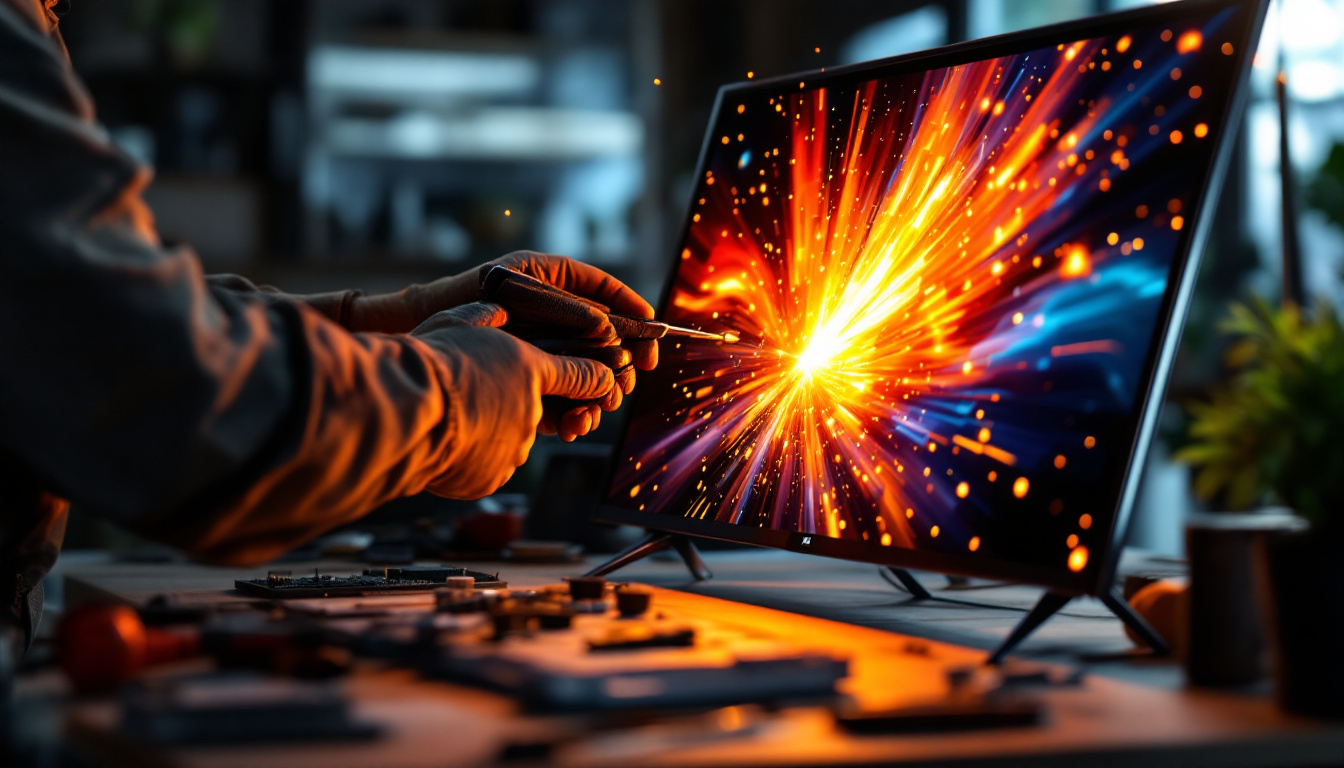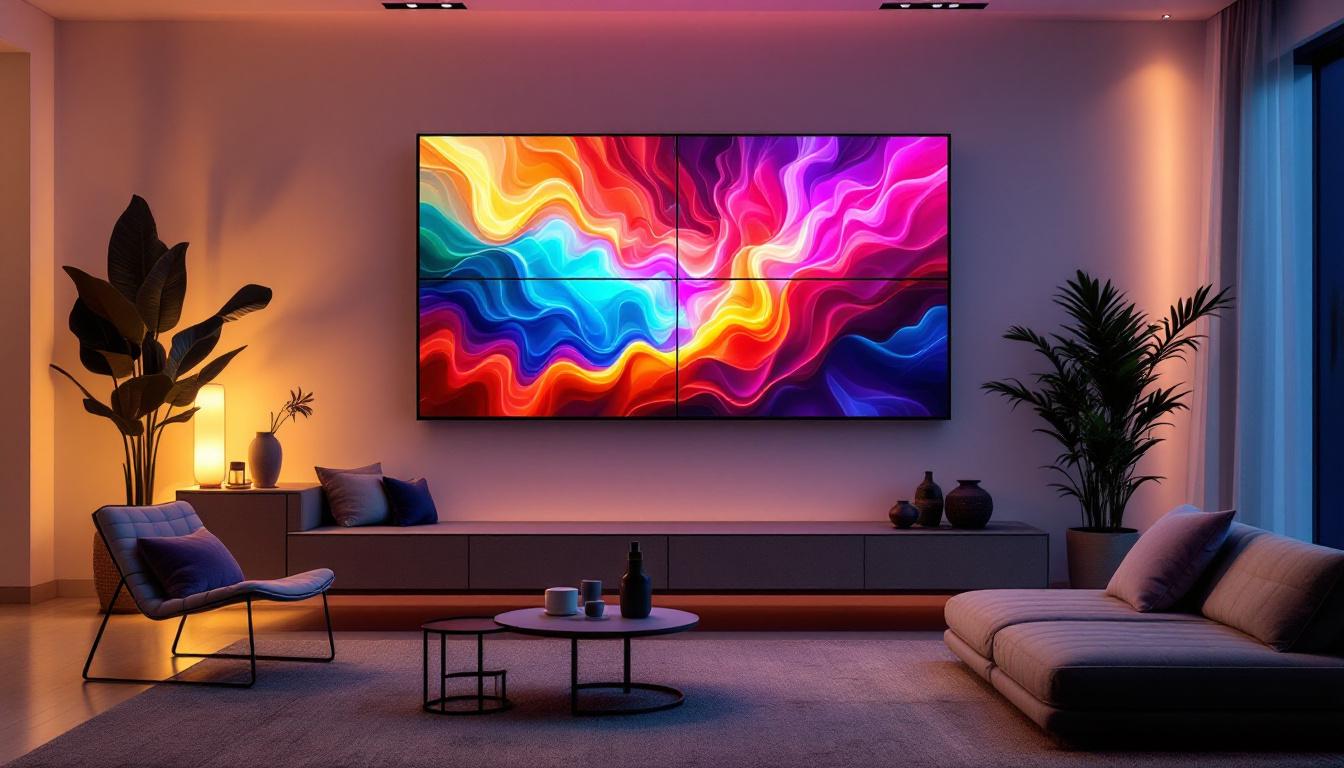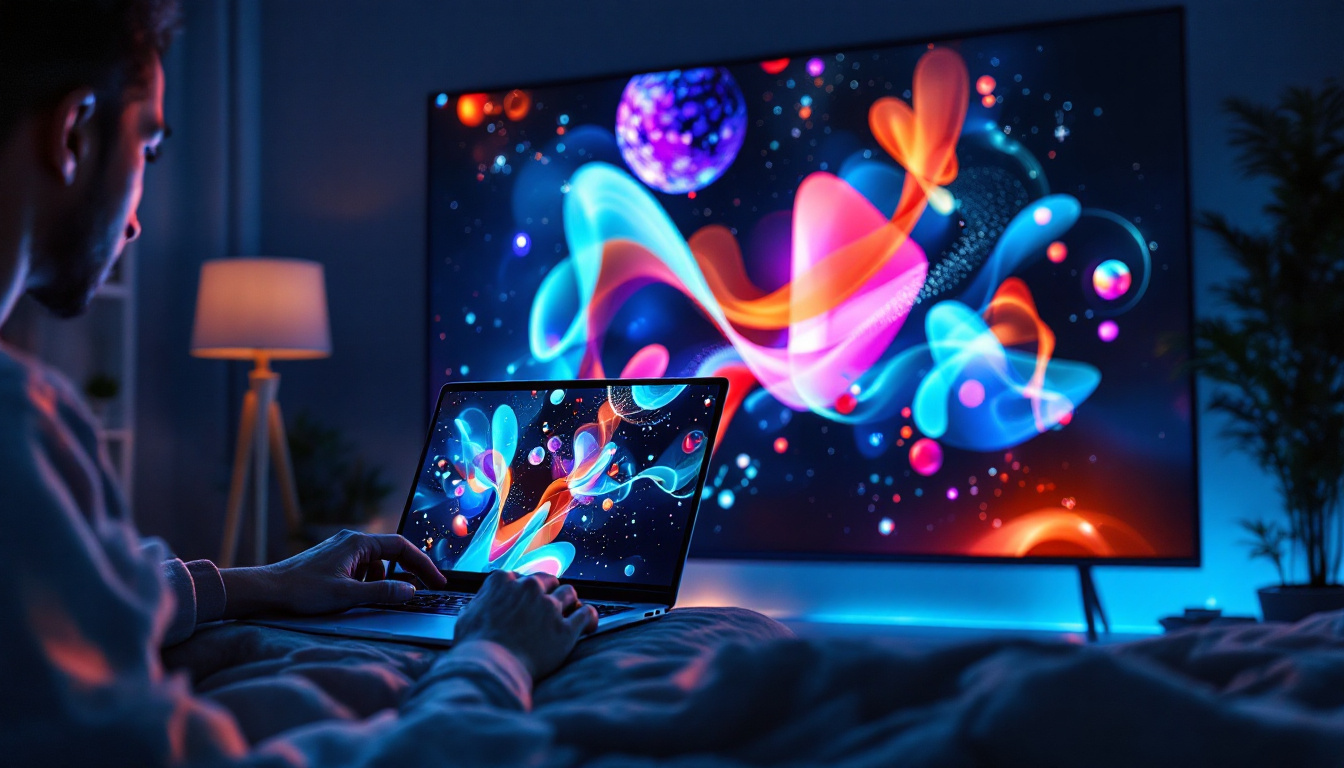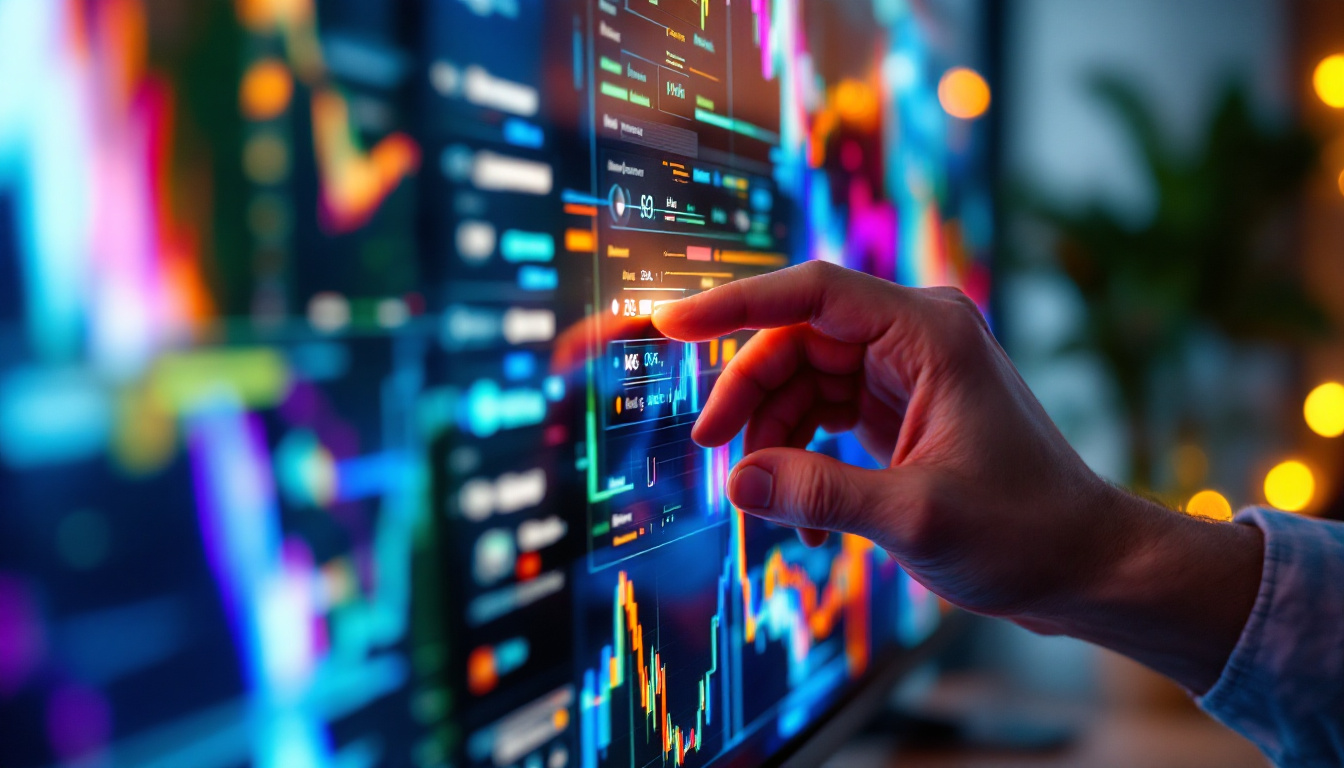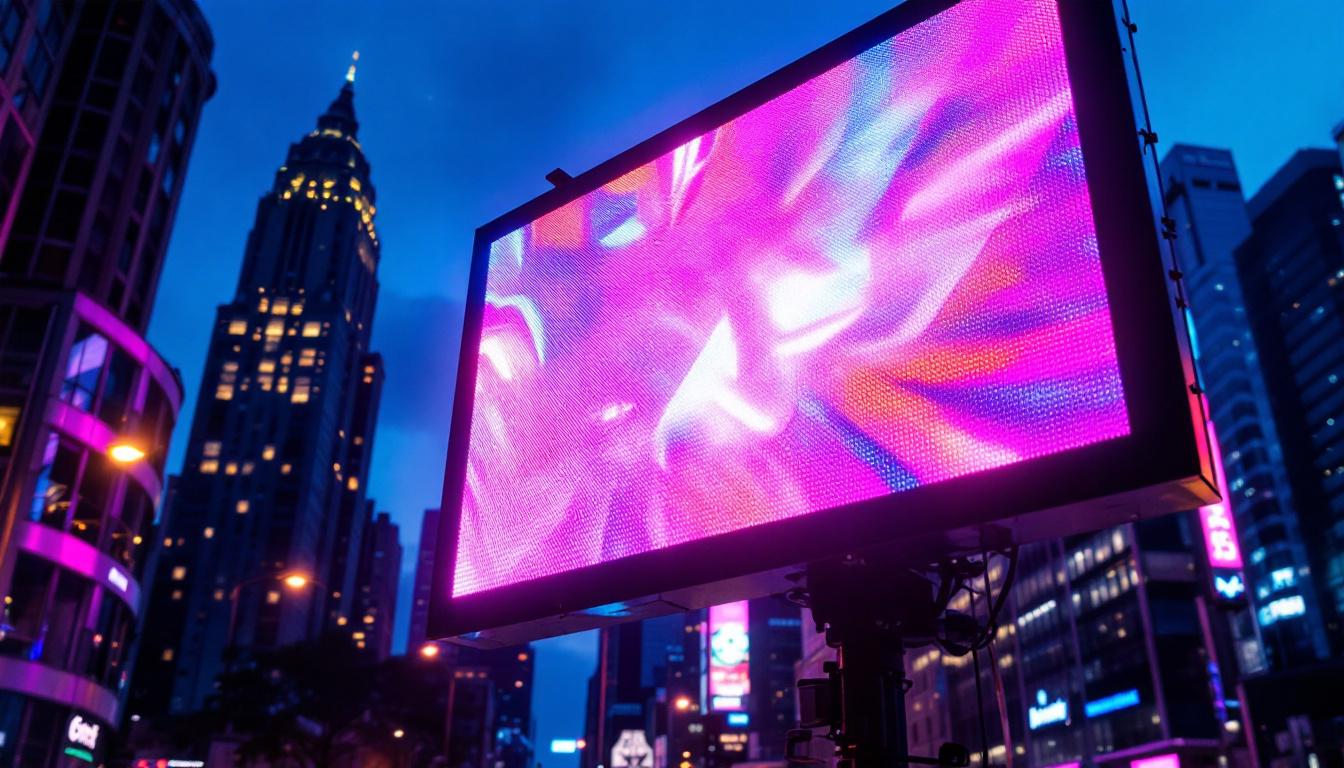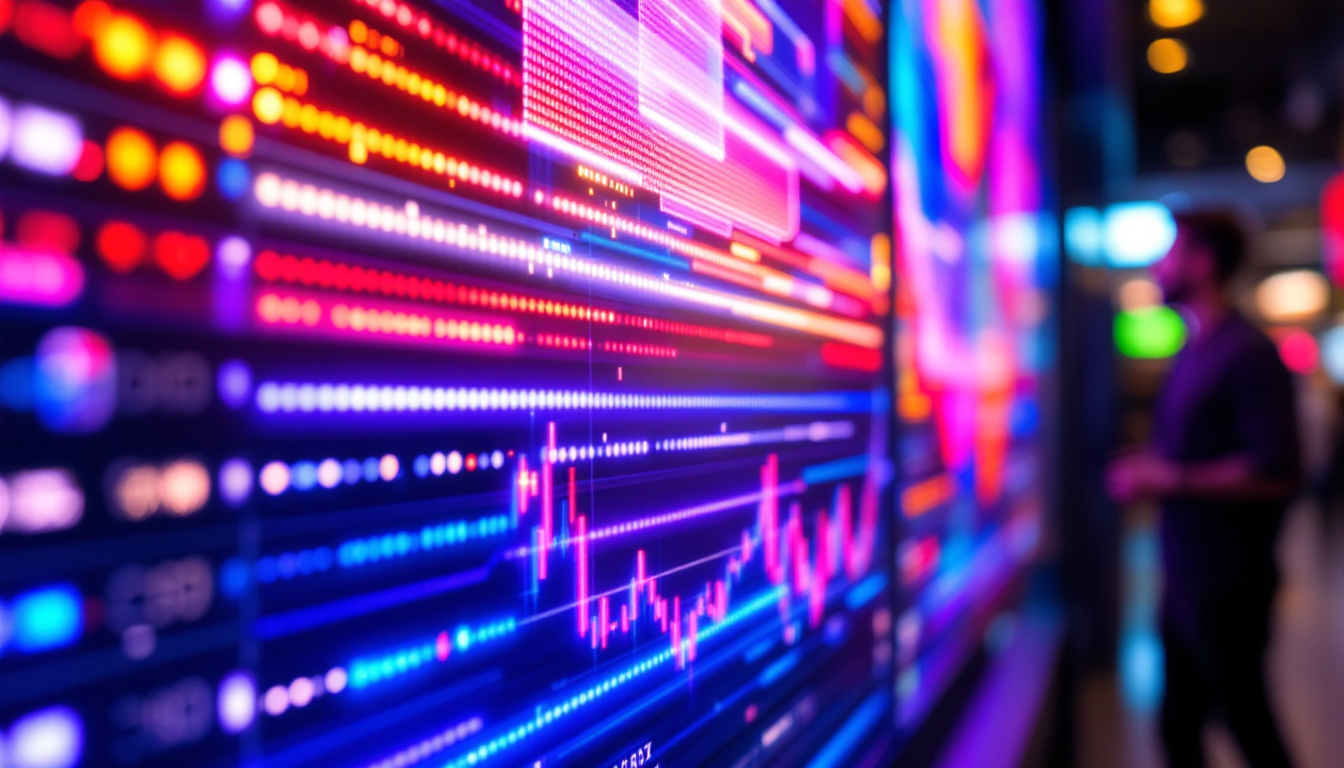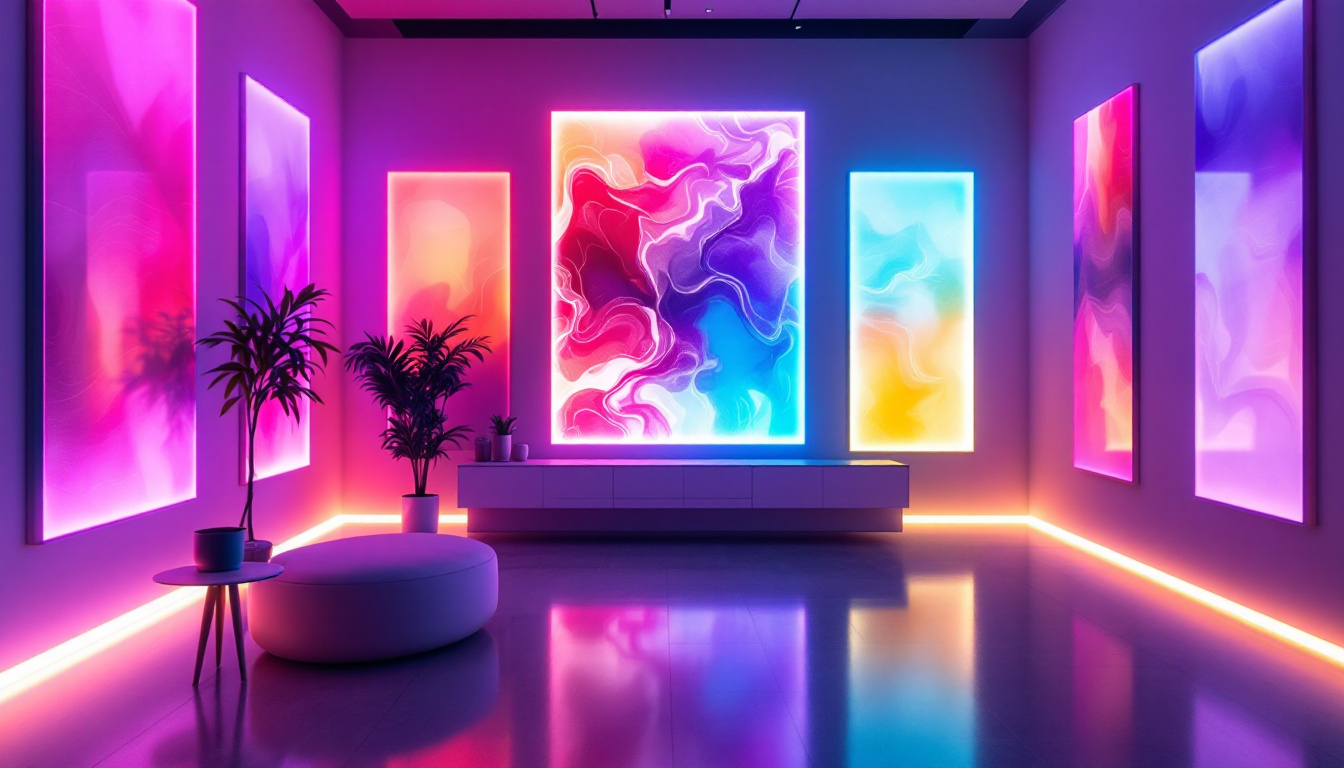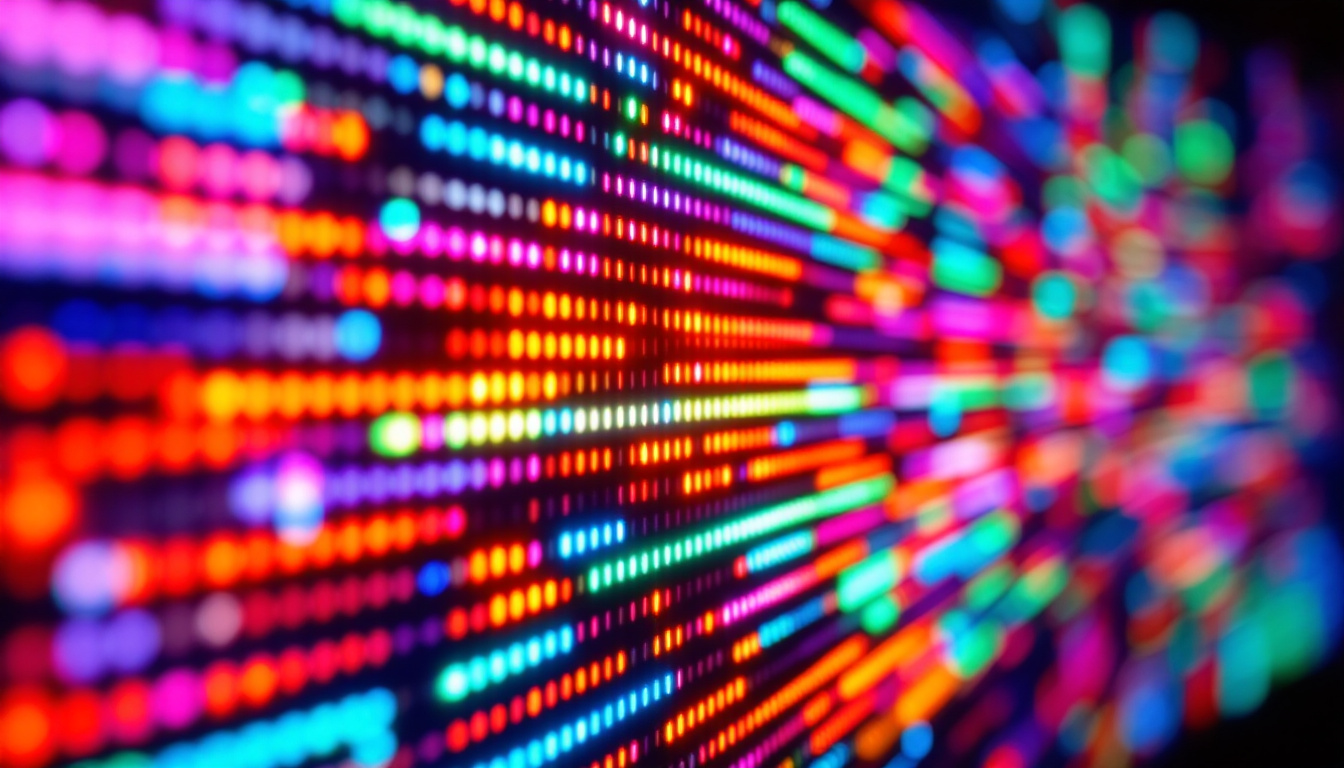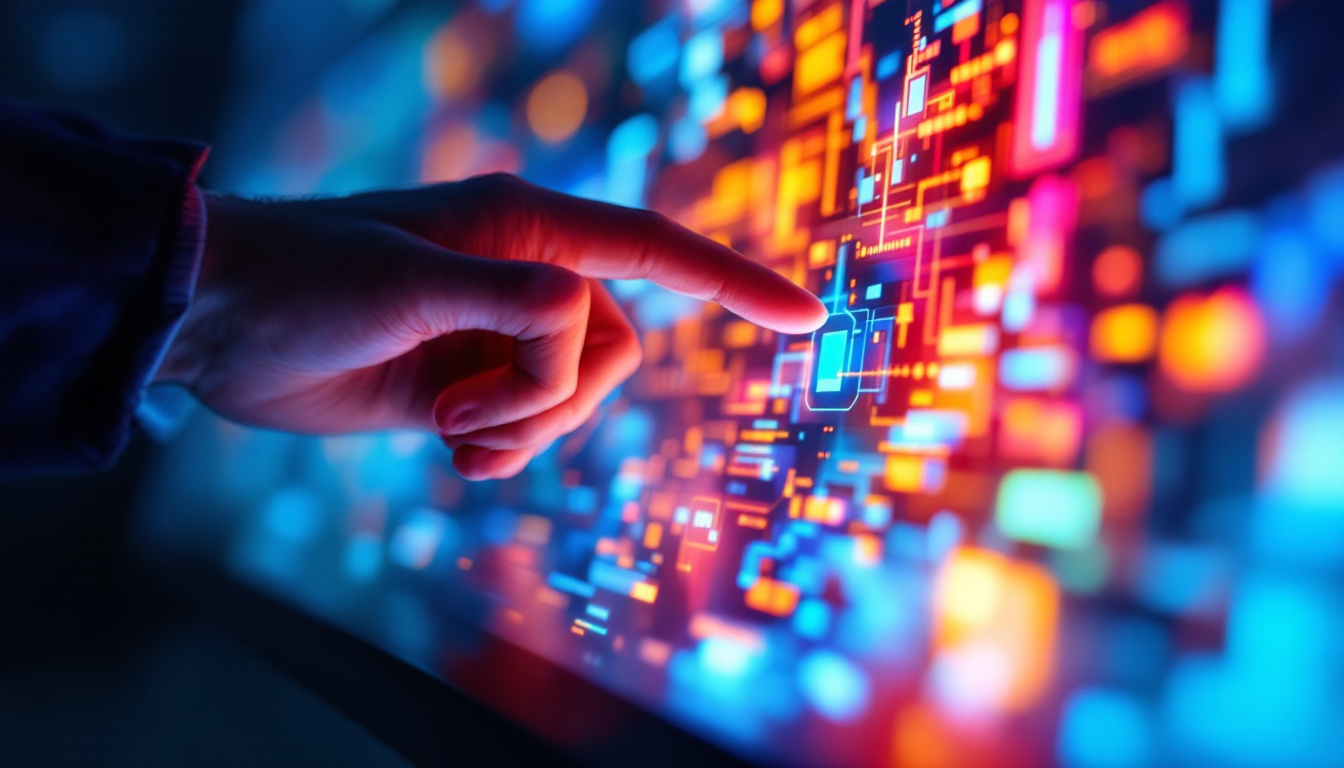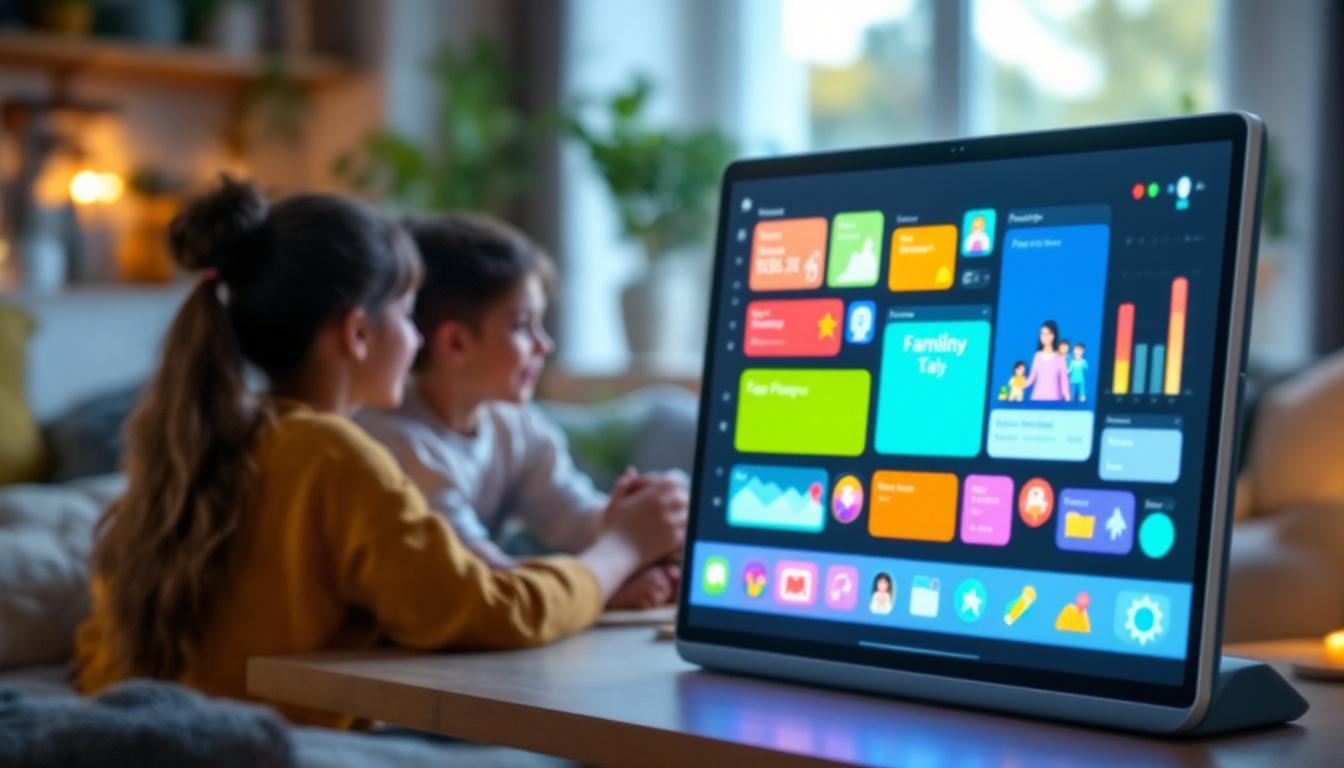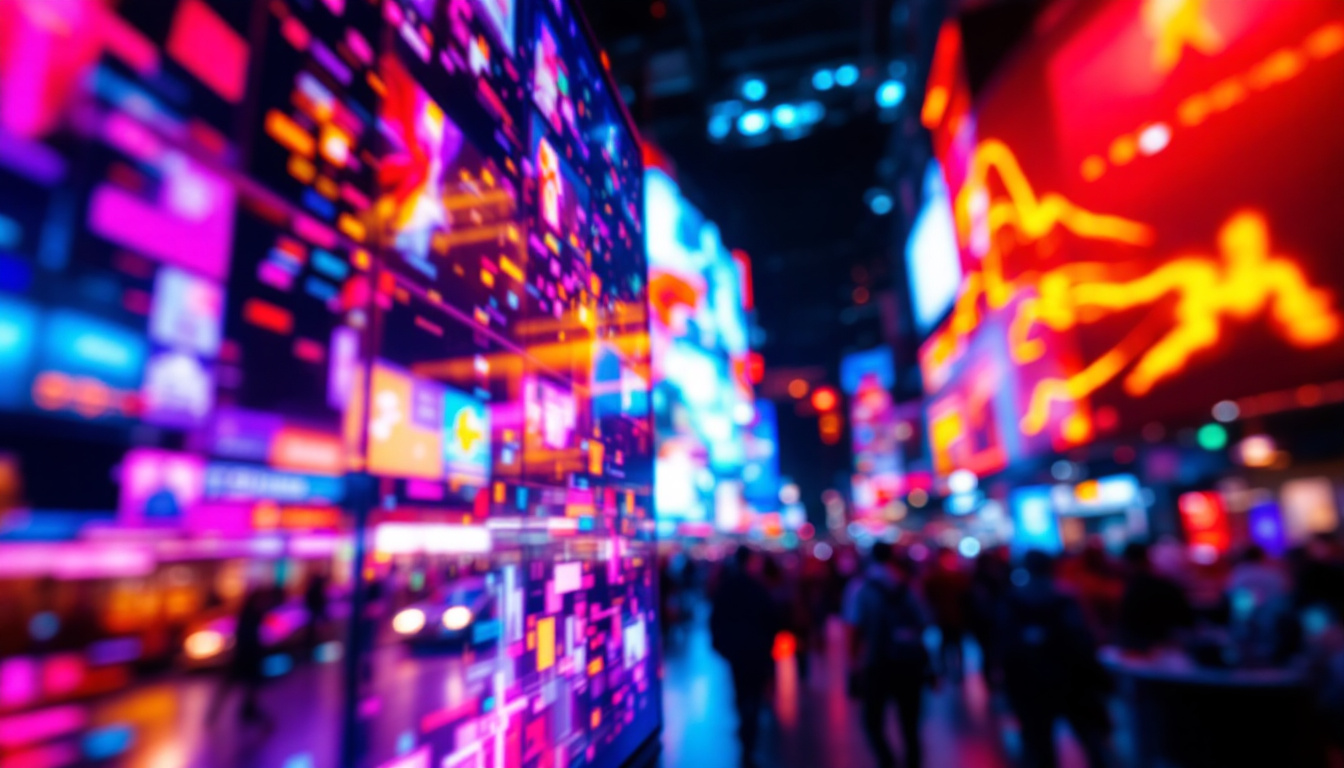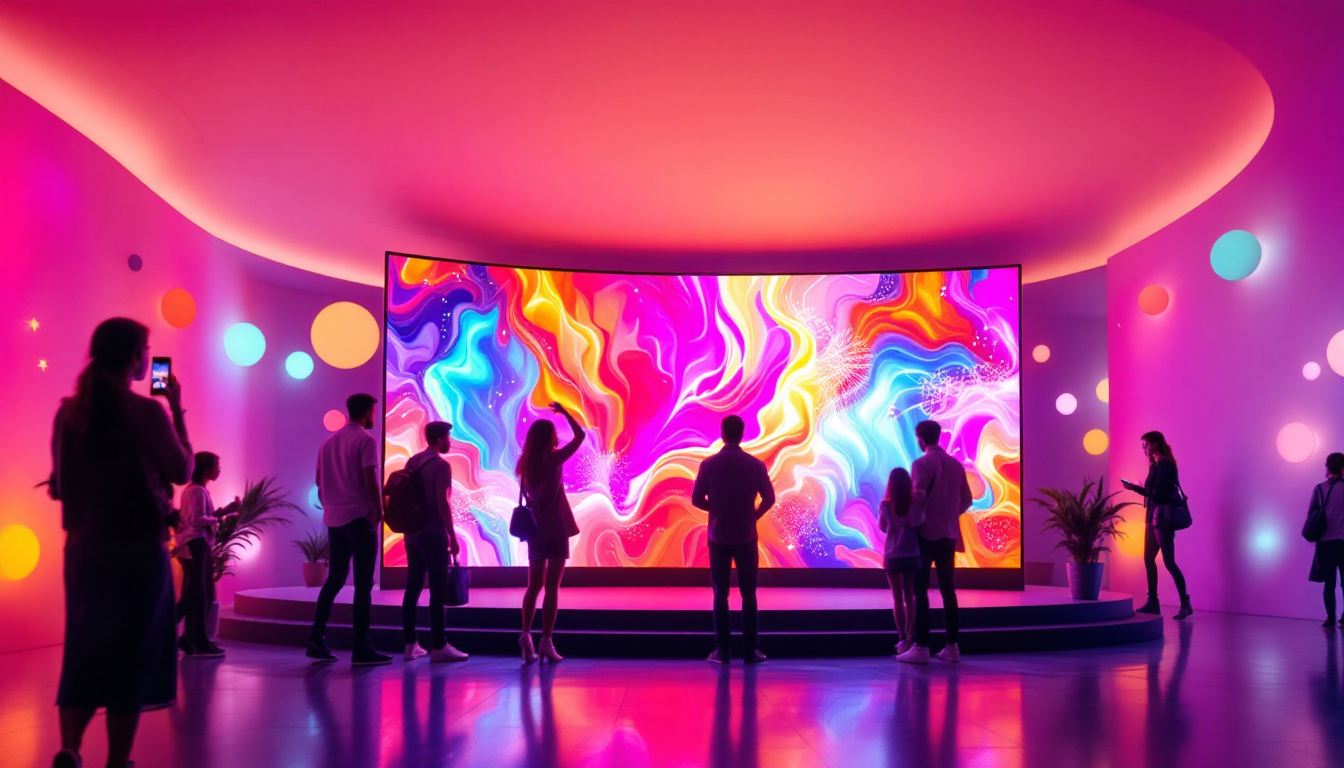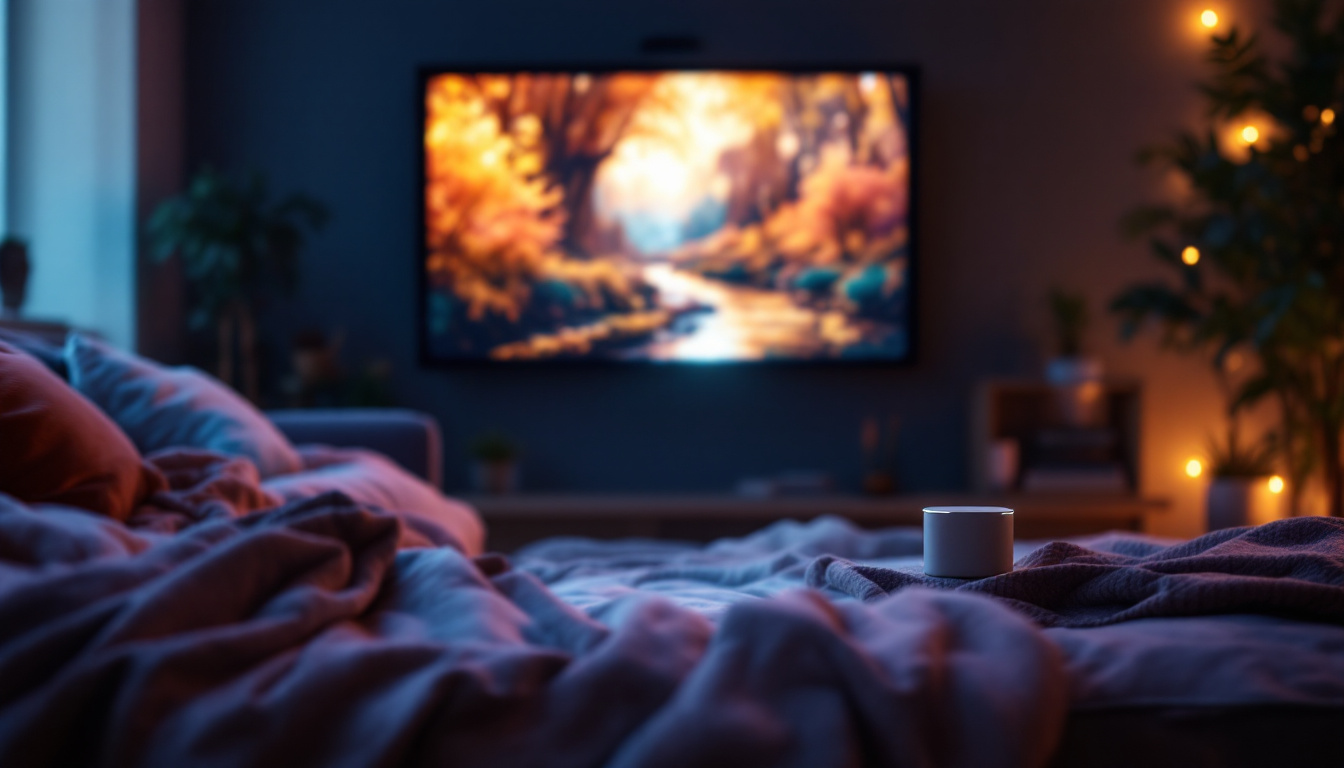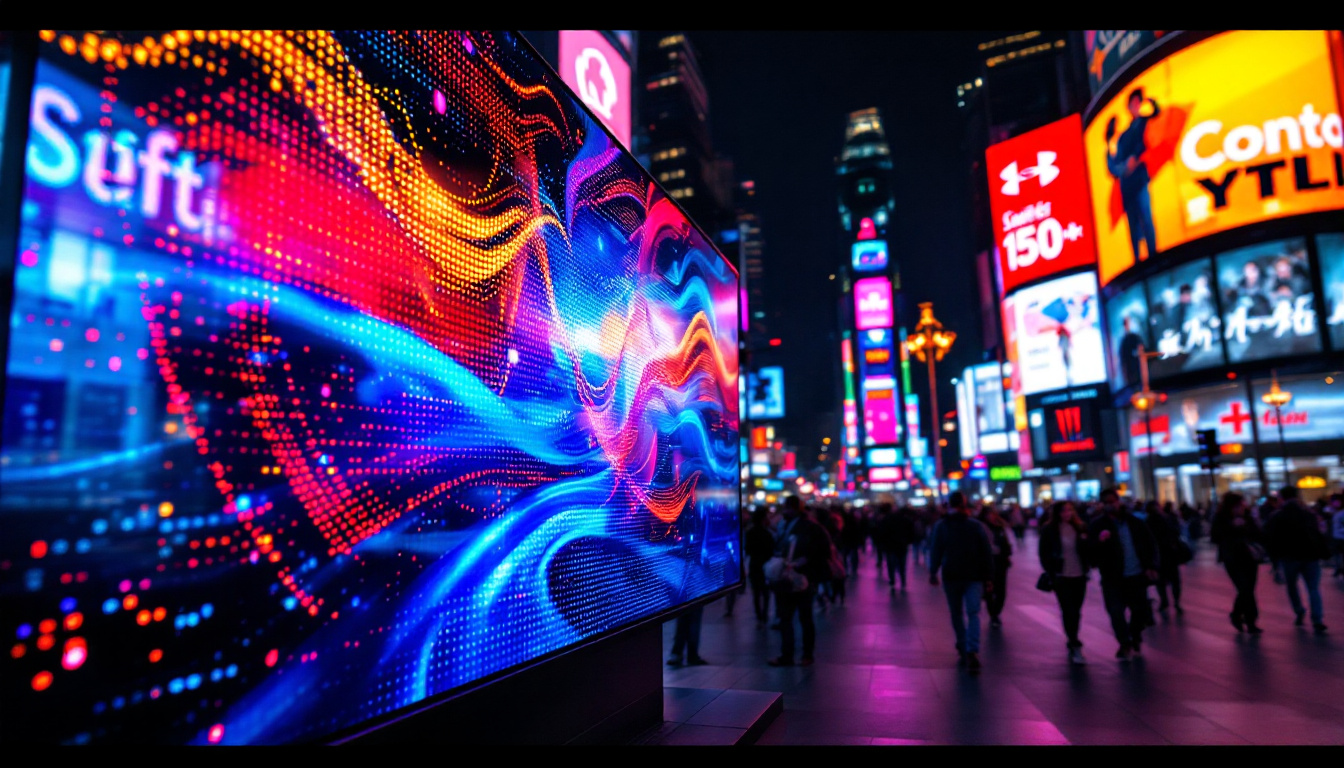In the modern age of technology, visual communication has become paramount. One of the most effective tools for conveying information quickly and efficiently is the LED display. A button board for wall-mounted LED displays serves as an interactive interface, allowing users to engage with the content in a dynamic way. This article delves into the intricacies of button boards for LED displays, exploring their functionality, applications, and the technology behind them.
What is a Button Board?
A button board is a control interface that allows users to interact with an LED display. Typically mounted on a wall, these boards feature various buttons that can be programmed to execute specific functions. This interaction can range from changing the displayed content to controlling the brightness or even switching between different display modes. Button boards are particularly useful in environments where quick and easy access to display controls is essential, such as in conference rooms, classrooms, and public information displays.
In addition to their functional capabilities, button boards can also enhance user experience by providing tactile feedback. The physical presence of buttons allows users to engage with the display in a more intuitive manner, making it easier to navigate through options or settings without the need for complex software interfaces. This can be especially beneficial in high-traffic areas where users may not have the time or inclination to learn a complicated system.
Key Components of a Button Board
Understanding the components of a button board is essential for grasping its functionality. A typical button board consists of:
- Buttons: Each button can be programmed to perform a specific action, such as changing the displayed message or adjusting settings. The design and layout of these buttons can vary, with some boards featuring illuminated buttons for better visibility in low-light environments.
- Microcontroller: This is the brain of the button board, processing inputs from the buttons and sending commands to the LED display. Advanced microcontrollers may also support additional features, such as real-time clock functions or connectivity with other devices for enhanced interactivity.
- Power Supply: A reliable power source is crucial for the operation of both the button board and the LED display. Some button boards are designed to be energy-efficient, minimizing power consumption while ensuring optimal performance.
Types of Button Boards
Button boards come in various designs and configurations, catering to different needs and environments. Some common types include:
- Standalone Button Boards: These are independent units that connect directly to an LED display, often used in smaller installations. They are ideal for situations where simplicity and ease of use are paramount, allowing users to quickly change messages or settings without navigating through complex menus.
- Integrated Systems: In larger setups, button boards may be integrated into a more extensive control system, allowing for centralized management of multiple displays. This integration can streamline operations in environments like stadiums or large venues, where numerous displays need to be controlled simultaneously.
- Wireless Button Boards: These boards use wireless technology to communicate with LED displays, providing flexibility in installation and operation. Wireless options eliminate the need for extensive cabling, making them a popular choice for temporary setups or locations where traditional wiring is impractical.
Moreover, the versatility of button boards allows them to be customized for specific applications. For instance, in educational settings, button boards can be programmed to display different teaching materials or interactive quizzes, enhancing the learning experience. Similarly, in retail environments, they can be used to showcase promotions or advertisements, allowing staff to quickly update content based on changing inventory or marketing strategies. The adaptability of button boards makes them an invaluable tool across various industries.
How LED Displays Work
To fully appreciate the role of button boards, it is essential to understand how LED displays function. LED (Light Emitting Diode) technology relies on a matrix of tiny light-emitting diodes to create images and text. Each diode can be individually controlled, allowing for a wide range of colors and brightness levels. This flexibility is what makes LED displays so popular in various applications, from large outdoor billboards to small handheld devices. The ability to manipulate each diode independently means that intricate designs and animations can be rendered with remarkable precision, captivating audiences and enhancing user experiences.
Pixel Matrix and Resolution
The resolution of an LED display is determined by the pixel matrix, which refers to the arrangement of diodes. Higher resolution displays have more pixels per inch, resulting in sharper images and clearer text. A button board can help manage the content displayed on these screens, ensuring that the right information is shown at the right time. For instance, in a digital signage application, a high-resolution display can showcase detailed graphics and videos, making it an effective tool for advertising and information dissemination. Moreover, the pixel density plays a crucial role in determining the viewing distance; closer viewing distances require higher resolutions to maintain image quality, while larger displays viewed from afar can utilize lower resolutions without sacrificing clarity.
Brightness and Color Control
One of the significant advantages of LED technology is its ability to produce vibrant colors and high brightness levels. Button boards can be programmed to adjust these settings, allowing users to optimize visibility based on environmental conditions. For instance, in a brightly lit room, increasing the brightness can ensure that the display remains legible. Additionally, LED displays can achieve a wide color gamut, meaning they can produce a broader spectrum of colors compared to traditional display technologies. This capability is particularly beneficial in applications such as art installations or high-definition video presentations, where color accuracy is paramount. Furthermore, advanced LED systems can incorporate sensors that automatically adjust brightness and color balance based on ambient light, enhancing the viewing experience while conserving energy.
Applications of Button Boards for LED Displays
Button boards for LED displays are versatile and find applications across various industries. Their ability to facilitate interaction makes them invaluable in numerous settings.
Advertising and Marketing
In retail environments, button boards allow businesses to update promotional content on LED displays quickly. This real-time capability enables companies to respond to changing market conditions, enhancing their marketing strategies. Customers can interact with the display, learning more about products or services through engaging visuals.
Information Sharing in Public Spaces
Button boards are also widely used in public spaces such as airports, train stations, and shopping malls. They can control displays that provide essential information, such as flight schedules, train times, or emergency alerts. The ability to update information instantly ensures that the public remains informed and safe.
Educational Institutions
Schools and universities utilize LED displays for announcements, schedules, and event promotions. Button boards enable staff to manage content easily, ensuring that students and visitors receive timely information. This interactivity fosters a more engaged learning environment.
Advantages of Using Button Boards
The integration of button boards with LED displays offers numerous benefits, making them a popular choice for various applications.
Enhanced User Interaction
Button boards provide a hands-on approach to interacting with displays. Users can easily navigate through content, making it more engaging and informative. This interactivity can lead to increased retention of information, especially in educational and promotional contexts.
Real-Time Updates
The ability to update content in real-time is one of the most significant advantages of using button boards. Businesses can respond to trends and events promptly, ensuring that their messaging remains relevant. This adaptability is crucial in fast-paced environments where information changes rapidly.
Cost-Effective Solutions
Investing in a button board for an LED display can be a cost-effective solution in the long run. By reducing the need for printed materials and allowing for quick updates, organizations can save on costs associated with traditional advertising and information dissemination methods.
Challenges and Considerations
While button boards offer many advantages, there are challenges and considerations that users should keep in mind.
Technical Complexity
Integrating a button board with an LED display can be technically complex, especially in larger installations. Proper planning and installation are essential to ensure that all components work seamlessly together. Organizations may need to invest in professional installation services to avoid potential issues.
Maintenance Requirements
Like any technology, button boards and LED displays require regular maintenance to ensure optimal performance. This includes checking connections, updating software, and replacing any faulty components. Organizations should factor in these maintenance needs when planning their installations.
Future Trends in Button Boards and LED Displays
The landscape of button boards and LED displays is continually evolving, driven by advancements in technology and changing user needs.
Integration with Smart Technology
As smart technology becomes more prevalent, the integration of button boards with IoT (Internet of Things) devices is expected to increase. This will allow for more sophisticated control options, such as remote management and automated updates based on environmental conditions or user interactions.
Improved User Interfaces
Future button boards are likely to feature more intuitive user interfaces, incorporating touchscreens and gesture controls. This will enhance user experience, making it easier for individuals to interact with displays without the need for physical buttons.
Increased Customization
Customization options for button boards will continue to expand, allowing organizations to tailor their interfaces to specific needs. This could include programmable buttons, customizable layouts, and even the integration of multimedia elements to create a more engaging experience.
Conclusion
Button boards for wall-mounted LED displays represent a significant advancement in the way information is shared and interacted with. Their ability to facilitate real-time updates, enhance user engagement, and provide a cost-effective solution makes them invaluable across various industries. As technology continues to evolve, the future of button boards and LED displays promises even more exciting developments that will further enhance communication and interaction.
In a world where information is constantly changing, the integration of button boards with LED displays will undoubtedly play a crucial role in how businesses, educational institutions, and public spaces communicate with their audiences. Understanding their functionality and applications is essential for leveraging their full potential.
As organizations look to improve their communication strategies, investing in button boards for LED displays is a step towards embracing the future of interactive technology.
Discover LumenMatrix’s Innovative LED Solutions
Ready to elevate your visual communication with the latest in LED technology? Explore LumenMatrix’s comprehensive range of LED display solutions, from vibrant Indoor and Outdoor LED Wall Displays to dynamic Vehicle and Sports Displays. Whether you’re looking to create an immersive experience with Floor LED Displays or captivate passersby with LED Poster Displays, LumenMatrix has the cutting-edge technology to bring your vision to life. Embrace the future of interactive technology and check out LumenMatrix LED Display Solutions today to see how we can help you share your message with impact and clarity.

